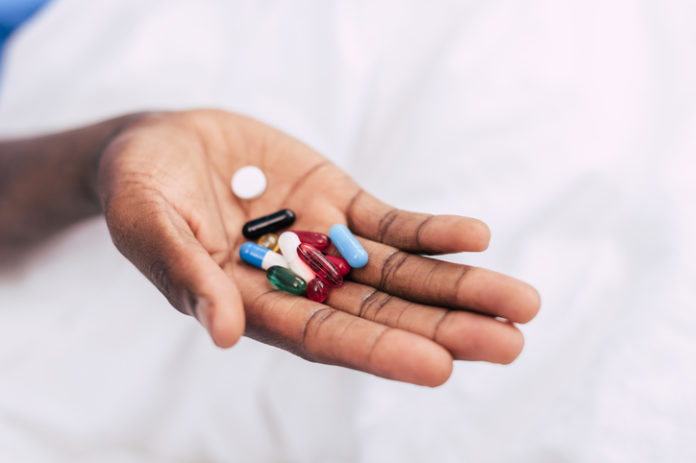Providing Home Medicines Reviews (HMR) in remote Indigenous communities has been challenging yet rewarding. I feel privileged to have been able to experience the powerful and beautiful country that remote HMR has taken me to, and grateful to the people who are willing to share it with me.
The incidence of diabetes in Indigenous people is higher than in the general Australian population. Reviewing patient profiles in preparation for a HMR, it is rare to find people without diabetes. Indeed, anyone on regular medicines without the diagnosis of diabetes is sure to have been tested for it regularly in the recent past at their local health centre.
Diabetes Australia sees the provision of ‘person centred care’ as essential to good management of diabetes.1 The American Diabetes Association cites studies in their latest guidelines that support the power of self-management in terms of lowering HbA1c.2
Support for self-management of diabetes is a challenge for the pharmacist where sometimes the pharmacist needs to put their own cultural context and their scientific knowledge of ‘best practice’ aside and negotiate strategies to meet the needs of the Indigenous client.
For example, our regular perception of an inappropriate diet in diabetes is one of overeating with lots of junk food, but in some cases in Aboriginal communities, there is just no food when the fortnightly money runs out. This food insecurity risks dangerous ‘hypos’ in patients on long-acting insulins or sulphonylureas and needs to be considered when intensifying therapy.
Patient centred care may also extend to the services negotiated for patients. I reviewed a 42-year-old mother of four children, who worked at the local school, who was on three oral hypoglycaemics and had a HbA1c still above target, so was prescribed glargine insulin.
Her adherence to insulin was not optimal and her dissatisfaction was further reflected in her not picking up her oral meds as often as she previously had. At the HMR interview, she was able to demonstrate good knowledge and technical skill with administering insulin and testing her own blood glucose levels.
She told me that in the busy morning rush at her house she didn’t have time or a quiet space to administer her insulin. After brainstorming a few practical solutions to this problem, and some education on why it was important, we negotiated with the health centre to provide a space where she could store her insulin and self-administer her insulin on her way to work. This was later changed at her suggestion to happening at lunchtime, as mornings were still busy getting to work. This also improved her adherence to her oral medicines.
One of the challenges of HMR in people with diabetes is to look past the blood sugar numbers to the omnipresent range of co-morbidities that accompany diabetes. These include obesity, hypertension, ischaemic heart disease, renal disease, sleep apnoea, depression, osteoarthritis and sexual dysfunction.
Addressing the patient’s prime issue affecting their lives is potentially more powerful than reducing blood sugar levels in terms of quality of life and longevity. As well, since most patients with multiple medicines use dose administration aids (DAAs) packed at an off-site pharmacy, it is sometimes difficult to determine which medicine is which, and which one may be causing a troublesome side effect, and it becomes all-or-nothing adherence.
More than once I have recommended that metformin be replaced with an alternate agent just to ensure that the people with a high risk of a cardiovascular event are not discouraged from taking their ACE inhibitor, statin and aspirin, because of the gastrointestinal problems of metformin.
In developing services, I have thought deeply about what is needed, not just to get HMRs done, but to develop a conduit for Indigenous patients who have no regular access to a pharmacist for the opportunity to focus on their medicines, why they have been prescribed for them and how they fit in their life.
I have used the HMR program to assist in this aim, as it is the only professional service funded from the 6CPA that is available to Indigenous people living in remote areas as services are not provided within the four walls of a community pharmacy.
The current funding model of one HMR per patient every two years does not meet needs, as there is only one visit by the HMR pharmacist with no pharmacists to check progress as a community pharmacist often does.
In some cases, the GP referring for the HMR is off-site and visits only weekly or fortnightly or may leave the position before having the follow-up management plan discussion. Then there is the cost of travel and the monthly cap on HMR numbers. A system that costs sometimes in excess of $1,000 in travel and where the pharmacist has to stop at 20 patients and go away to come back a month later at more expense is not viable.
The announcement in July 2017 by Minister Hunt of clinical pharmacist services in Aboriginal clinics offers hope for improving health outcomes and medicines use for these complex patients as the pharmacist can be available to chat to the patient when they come in to collect medicines and refer to the GP if further intervention is required. A pharmacist employed at a remote Indigenous health service cannot be entirely divorced from dispensing and counselling functions as there is no community pharmacy next door to meet this need. There should be sufficient resources in any future model to enable clinical services as well as supported dispensing services and opportunistic counselling.
FRAN VAUGHAN is a consultant pharmacist working with remote Aboriginal communities in the Northern Territory.
References:
- Diabetes Australia. Person centred care for people with diabetes. 2015. At: adea.com.au
- Beck J, et al. 2017 National Standards for Diabetes Self-Management Education and Support. Diabetes Care; 2017.



 Dr Peter Tenni[/caption]
Dr Peter Tenni[/caption]
 How should we deprescribe gabapentinoids, according to the Maudsley Deprescribing Guidelines[/caption]
How should we deprescribe gabapentinoids, according to the Maudsley Deprescribing Guidelines[/caption]



 Pharmacists have always prescribed, but they have the potential to prescribe much more
Pharmacists have always prescribed, but they have the potential to prescribe much more







